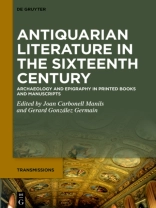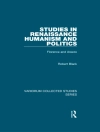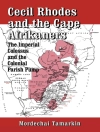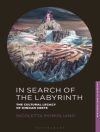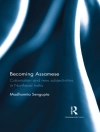During the sixteenth century, antiquarian studies (the study of the material past, comprising modern archaeology, epigraphy, and numismatics) rose in Europe in parallel to the technical development of the printing press. Some humanists continued to prefer the manuscript form to disseminate their findings – as numerous fair copies of sylloges and treatises attest -, but slowly the printed medium grew in popularity, with its obvious advantages but also its many challenges. As antiquarian printed works appeared, the relationship between manuscript and printed sources also became less linear: printed copies of earlier works were annotated to serve as a means of research, and printed works could be copied by hand – partially or even completely. This book explores how antiquarian literature (collections of inscriptions, treatises, letters…) developed throughout the sixteenth century, both in manuscript and in print; how both media interacted with each other, and how these printed antiquarian works were received, as attested by the manuscript annotations left by their early modern owners and readers.
Gerard Gonzalez Germain & Joan Carbonell Manils
Antiquarian Literature in the Sixteenth Century [PDF ebook]
Archaeology and Epigraphy in Printed Books and Manuscripts
Antiquarian Literature in the Sixteenth Century [PDF ebook]
Archaeology and Epigraphy in Printed Books and Manuscripts
Mua cuốn sách điện tử này và nhận thêm 1 cuốn MIỄN PHÍ!
Ngôn ngữ Anh ● định dạng PDF ● Trang 377 ● ISBN 9783111349916 ● Biên tập viên Gerard Gonzalez Germain & Joan Carbonell Manils ● Nhà xuất bản De Gruyter ● Được phát hành 2024 ● Có thể tải xuống 3 lần ● Tiền tệ EUR ● TÔI 9489736 ● Sao chép bảo vệ Adobe DRM
Yêu cầu trình đọc ebook có khả năng DRM
